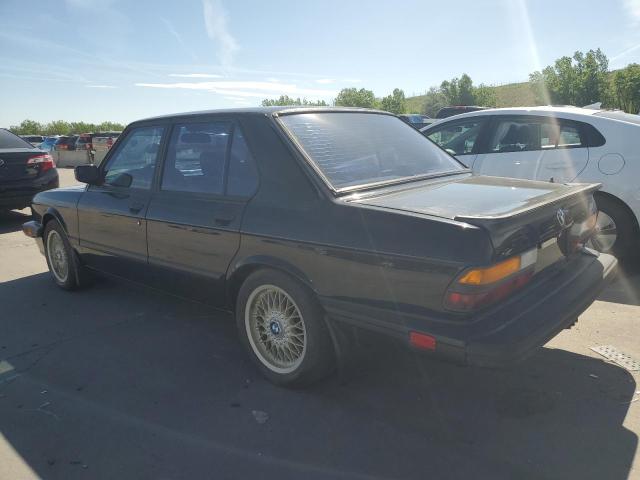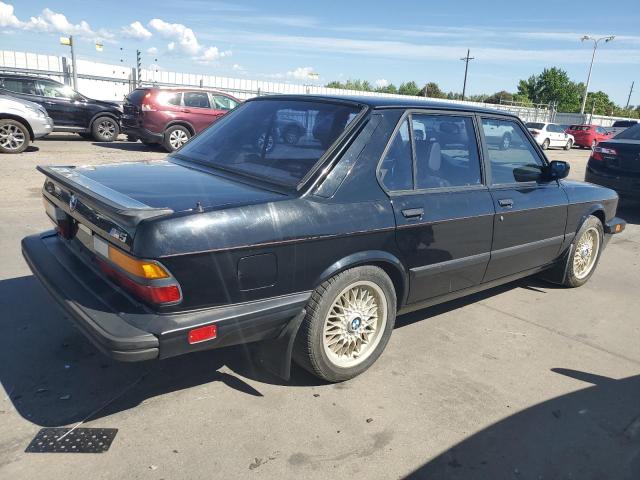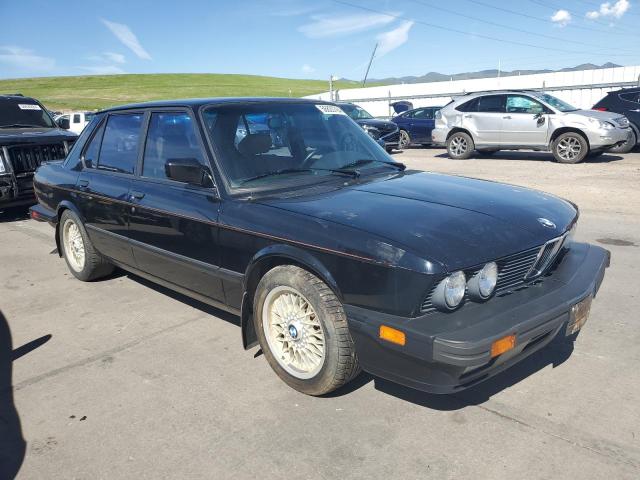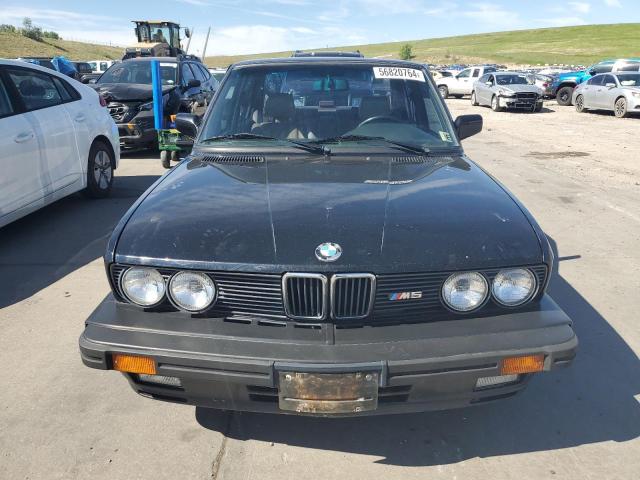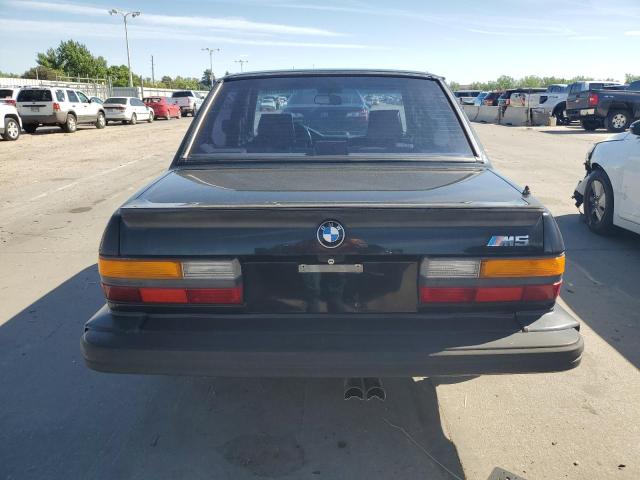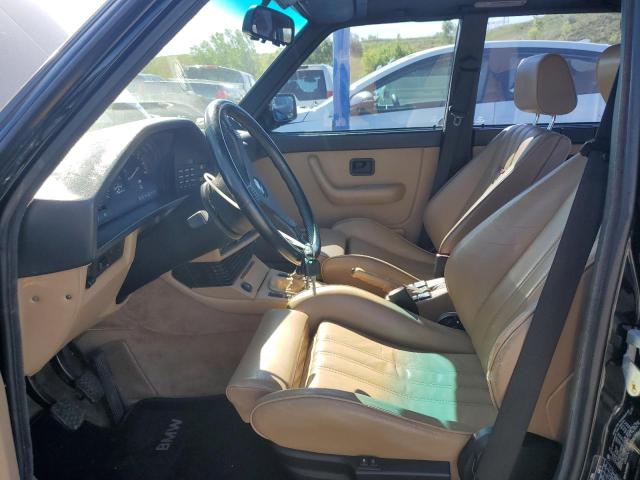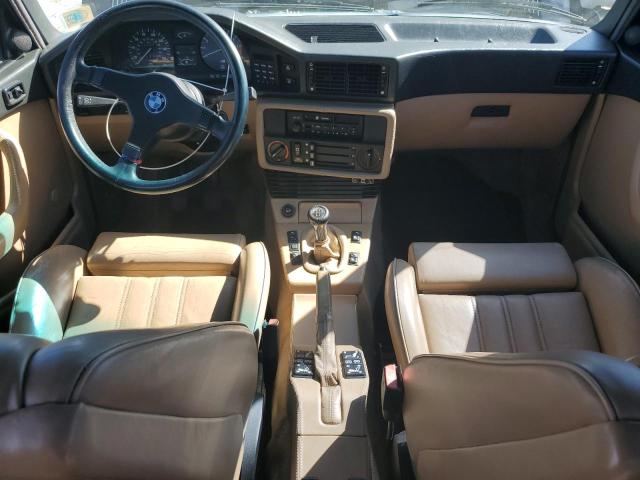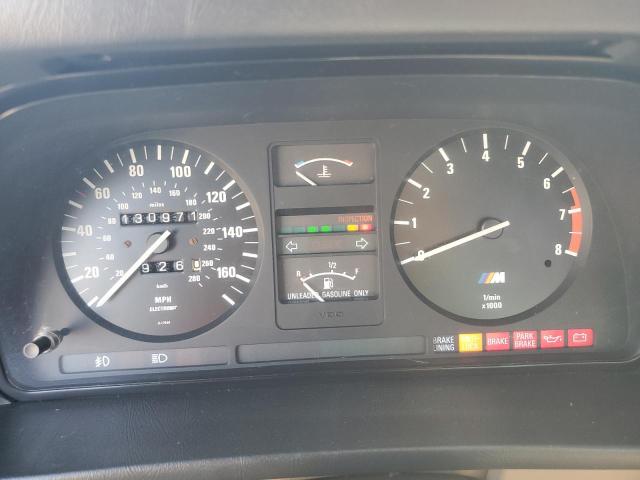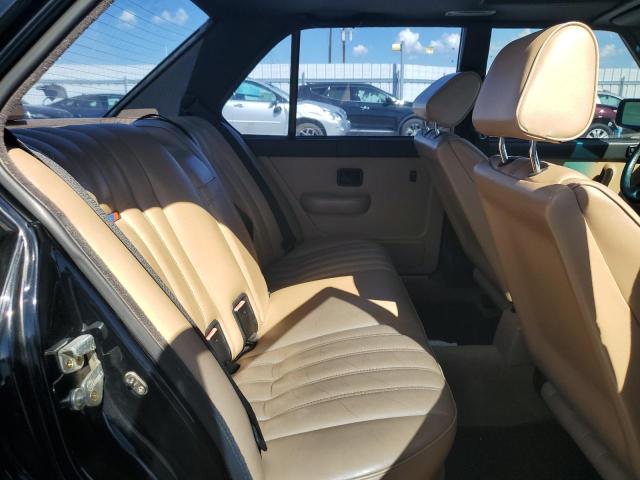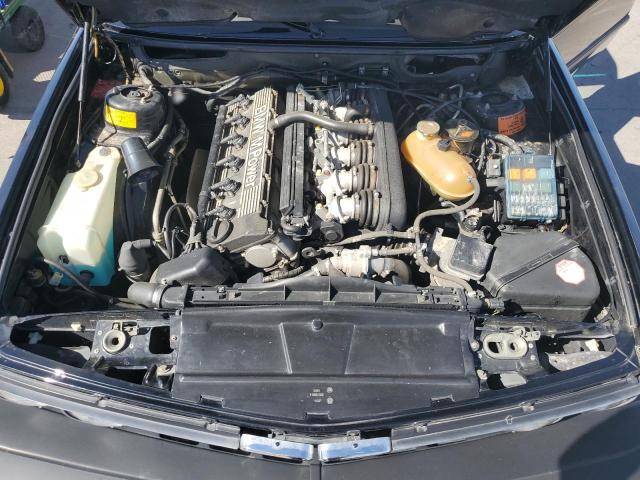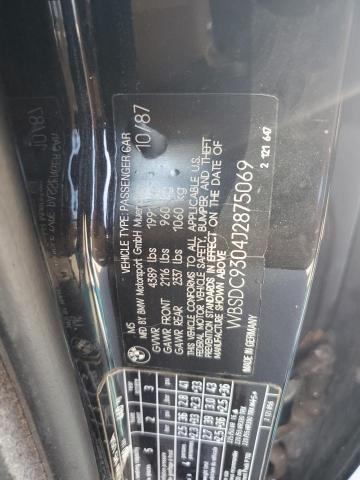1988 BMW M5 | WBSDC9304J2875069
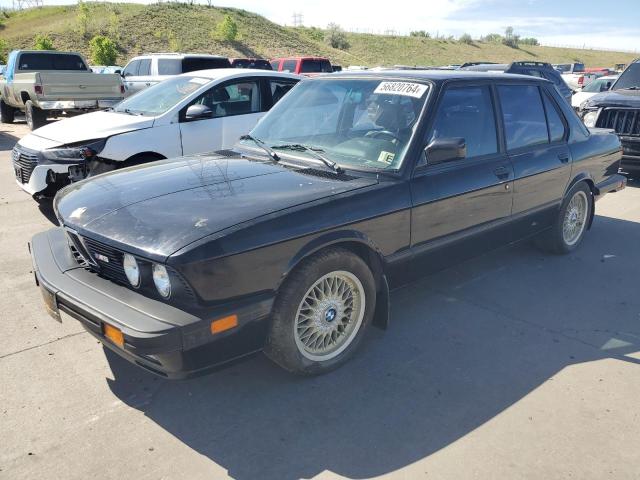 ❯
❯Specifications
1
~$43,000
Engine: 3.5L naturally aspirated inline-6
Torque: 340 Nm
0–100 km/h: ~6.5 s
The E28 M5 was the world’s first true high-performance sports sedan, blending the poise of a luxury 5 Series with the high-revving heart of a supercar. Under the hood was the legendary M88/3 engine — a detuned version of the same unit used in the BMW M1. It produced 286 horsepower and 340 Nm of torque (in European spec), and paired with a 5-speed manual transmission, it launched the M5 from 0–100 km/h in about 6.5 seconds — blistering for a sedan in the mid-1980s.
North American models used the S38 engine, nearly identical but slightly detuned (256 hp) to meet emissions regulations, with a catalytic converter and dual-mass flywheel. Still, performance remained impressive, with strong torque delivery, eager throttle response, and a redline over 7,000 rpm — rare for a four-door car of the time.
The E28 M5 featured a reinforced chassis, upgraded suspension, ventilated disc brakes, a limited-slip differential, and Bilstein shocks, creating a truly balanced, communicative drive. With no electronic aids, it demanded precision and rewarded drivers with purity, linearity, and poise — a sporting icon built for those who craved performance without sacrificing daily usability.
Body Styles
The E28 M5 was available exclusively as a four-door sedan, based on the second-generation BMW 5 Series platform. It featured a restrained, functional design — boxy and purposeful, with only the most subtle cues hinting at its capabilities. These included slightly wider tires, body-colored bumpers and mirrors, a discreet front spoiler, and unique 16-inch BBS-style alloy wheels.
European-spec M5s were built at BMW Motorsport in Garching and often had “shadowline” black exterior trim, while the U.S.-spec version was assembled in Dingolfing, with a more luxurious specification. The understated design helped reinforce the car’s identity as a wolf in sheep’s clothing.
Model Name Meaning (Manufacturer)
“M5” designates the Motorsport (M) variant of the 5 Series, and the E28 M5 was the very first car to carry this full name officially. It represented a new era for BMW: one where track performance, daily usability, and executive comfort could coexist.
Model Name Meaning (Languages)
“M5” as an alphanumeric model name has become globally synonymous with high-performance sedans. Though it doesn’t have linguistic meaning, the M badge immediately evokes ideas of precision, performance, and motorsport heritage. In the 1980s, it stood out as something new, meaningful, and instantly desirable.
Body & Interior Colors and Rims
The BMW M5 (E28) from 1984 to 1988 was offered in a deliberately limited and understated selection of exterior colors, in keeping with its identity as a stealth performance sedan. Most models were finished in jet black (Schwarz) or Delphin Metallic (a deep graphite grey), emphasizing a sleeper appearance. Other period-accurate options included Zinnoberrot (Cinnabar Red), Lachs Silver, and Royal Blue, though availability varied by market. In North America, nearly all examples were delivered exclusively in jet black, paired with a matching or contrast interior.
The European-spec E28 M5 offered greater flexibility, including rare shades like Arktisblau Metallic, Graphit Metallic, and Burgundrot Metallic, particularly for special-order cars. Unlike later M models, the E28 M5 carried almost no external badging — the only visual cues were slightly flared fenders, body-color mirror caps, a subtle front air dam, and a black rear spoiler.
Interiors were tailored to understated sportiness, typically upholstered in Black or Natur leather in most markets. In Europe, optional M-Technic cloth with Motorsport tri-color stripes was available for the deeply bolstered front sport seats. The dashboard and trim were finished in matte black with minimal brightwork, while certain versions received real wood inlays or Anthracite cloth headliners. Features like air conditioning, on-board computer, and cruise control came standard in most builds, reinforcing the M5’s dual mission as a luxury and performance machine.
Wheels were a key stylistic and functional element: the E28 M5 rode on metric 415 mm TRX wheels (about 16.3 inches), mounted with Michelin TRX performance tires, a unique and now rare sizing system. In some markets, optional 16-inch BBS cross-spoke alloys were available, often finished in silver or black center with polished lip, enhancing both grip and period-correct aggression. The compact wheel arches and subtle fender flares maintained the visual integrity of the original 5 Series, while hinting at the performance capability hidden beneath.
Top Expensive Options
- Air Conditioning with Auto Climate Control (Europe): ~$1,500
- Electric Sunroof: ~$800
- Rear Headrests: ~$300
- Headlight Washer/Wiper System: ~$400
- Leather Upholstery Upgrade (Europe): ~$1,200
- Limited-Slip Differential (standard in most markets): Included
- Bavaria Sound System / Premium Radio: ~$500
- Trip Computer with Multi-Function Display: ~$600
vs Competitors
In its era, the E28 M5 had no true competitors. Mercedes-Benz had not yet released the 500E, and Audi’s S-cars were still years away. The M5’s closest rival was perhaps the Jaguar XJ6 or XJ12, which offered comfort but lacked performance or handling parity. The M5 was faster than many sports cars of the day, including the Porsche 944 and Alfa Romeo GTV6, and could match the Ferrari Mondial in a straight line—while offering seating for five.
The genius of the E28 M5 lay in its ability to blend supercar power with saloon practicality. It created a new market: the performance luxury sedan — a class that BMW would dominate for decades.
Fun Fact
Each E28 M5 was hand-assembled at BMW Motorsport in Garching, Germany, and just 2,191 units were produced worldwide, making it one of the rarest M cars ever. Of these, only 1,370 were sold in North America, and all came in Jet Black with a black leather interior. The engine, the M88/3, was a direct descendant of the BMW M1 supercar, making the E28 M5 the only production sedan in history to share its engine with a mid-engine supercar.
Lot Details
- Sale Date19/Jun/2024
- Lot Number56820764
- Sale document
- Location
- Odometer130,971 miles
- Primary Damage:FRONT END
- Secondary DamageREAR END
- Fuel
- Engine Type3.5L 6
- Transmission
- Drive Type
- Color
Final Bid BMW M5 (1988)
$35,000
$35,000
$35,000
Specifications
1
~$43,000
Torque:
0–100 km/h:
The E28 M5 was the world’s first true high-performance sports sedan, blending the poise of a luxury 5 Series with the high-revving heart of a supercar. Under the hood was the legendary M88/3 engine — a detuned version of the same unit used in the BMW M1. It produced 286 horsepower and 340 Nm of torque (in European spec), and paired with a 5-speed manual transmission, it launched the M5 from 0–100 km/h in about 6.5 seconds — blistering for a sedan in the mid-1980s.
North American models used the S38 engine, nearly identical but slightly detuned (256 hp) to meet emissions regulations, with a catalytic converter and dual-mass flywheel. Still, performance remained impressive, with strong torque delivery, eager throttle response, and a redline over 7,000 rpm — rare for a four-door car of the time.
The E28 M5 featured a reinforced chassis, upgraded suspension, ventilated disc brakes, a limited-slip differential, and Bilstein shocks, creating a truly balanced, communicative drive. With no electronic aids, it demanded precision and rewarded drivers with purity, linearity, and poise — a sporting icon built for those who craved performance without sacrificing daily usability.
Body Styles
The E28 M5 was available exclusively as a four-door sedan, based on the second-generation BMW 5 Series platform. It featured a restrained, functional design — boxy and purposeful, with only the most subtle cues hinting at its capabilities. These included slightly wider tires, body-colored bumpers and mirrors, a discreet front spoiler, and unique 16-inch BBS-style alloy wheels.
European-spec M5s were built at BMW Motorsport in Garching and often had “shadowline” black exterior trim, while the U.S.-spec version was assembled in Dingolfing, with a more luxurious specification. The understated design helped reinforce the car’s identity as a wolf in sheep’s clothing.
Model Name Meaning (Manufacturer)
“M5” designates the Motorsport (M) variant of the 5 Series, and the E28 M5 was the very first car to carry this full name officially. It represented a new era for BMW: one where track performance, daily usability, and executive comfort could coexist.
Model Name Meaning (Languages)
“M5” as an alphanumeric model name has become globally synonymous with high-performance sedans. Though it doesn’t have linguistic meaning, the M badge immediately evokes ideas of precision, performance, and motorsport heritage. In the 1980s, it stood out as something new, meaningful, and instantly desirable.
Body & Interior Colors and Rims
The BMW M5 (E28) from 1984 to 1988 was offered in a deliberately limited and understated selection of exterior colors, in keeping with its identity as a stealth performance sedan. Most models were finished in jet black (Schwarz) or Delphin Metallic (a deep graphite grey), emphasizing a sleeper appearance. Other period-accurate options included Zinnoberrot (Cinnabar Red), Lachs Silver, and Royal Blue, though availability varied by market. In North America, nearly all examples were delivered exclusively in jet black, paired with a matching or contrast interior.
The European-spec E28 M5 offered greater flexibility, including rare shades like Arktisblau Metallic, Graphit Metallic, and Burgundrot Metallic, particularly for special-order cars. Unlike later M models, the E28 M5 carried almost no external badging — the only visual cues were slightly flared fenders, body-color mirror caps, a subtle front air dam, and a black rear spoiler.
Interiors were tailored to understated sportiness, typically upholstered in Black or Natur leather in most markets. In Europe, optional M-Technic cloth with Motorsport tri-color stripes was available for the deeply bolstered front sport seats. The dashboard and trim were finished in matte black with minimal brightwork, while certain versions received real wood inlays or Anthracite cloth headliners. Features like air conditioning, on-board computer, and cruise control came standard in most builds, reinforcing the M5’s dual mission as a luxury and performance machine.
Wheels were a key stylistic and functional element: the E28 M5 rode on metric 415 mm TRX wheels (about 16.3 inches), mounted with Michelin TRX performance tires, a unique and now rare sizing system. In some markets, optional 16-inch BBS cross-spoke alloys were available, often finished in silver or black center with polished lip, enhancing both grip and period-correct aggression. The compact wheel arches and subtle fender flares maintained the visual integrity of the original 5 Series, while hinting at the performance capability hidden beneath.
Top Expensive Options
- Air Conditioning with Auto Climate Control (Europe): ~$1,500
- Electric Sunroof: ~$800
- Rear Headrests: ~$300
- Headlight Washer/Wiper System: ~$400
- Leather Upholstery Upgrade (Europe): ~$1,200
- Limited-Slip Differential (standard in most markets): Included
- Bavaria Sound System / Premium Radio: ~$500
- Trip Computer with Multi-Function Display: ~$600
vs Competitors
In its era, the E28 M5 had no true competitors. Mercedes-Benz had not yet released the 500E, and Audi’s S-cars were still years away. The M5’s closest rival was perhaps the Jaguar XJ6 or XJ12, which offered comfort but lacked performance or handling parity. The M5 was faster than many sports cars of the day, including the Porsche 944 and Alfa Romeo GTV6, and could match the Ferrari Mondial in a straight line—while offering seating for five.
The genius of the E28 M5 lay in its ability to blend supercar power with saloon practicality. It created a new market: the performance luxury sedan — a class that BMW would dominate for decades.
Fun Fact
Each E28 M5 was hand-assembled at BMW Motorsport in Garching, Germany, and just 2,191 units were produced worldwide, making it one of the rarest M cars ever. Of these, only 1,370 were sold in North America, and all came in Jet Black with a black leather interior. The engine, the M88/3, was a direct descendant of the BMW M1 supercar, making the E28 M5 the only production sedan in history to share its engine with a mid-engine supercar.


